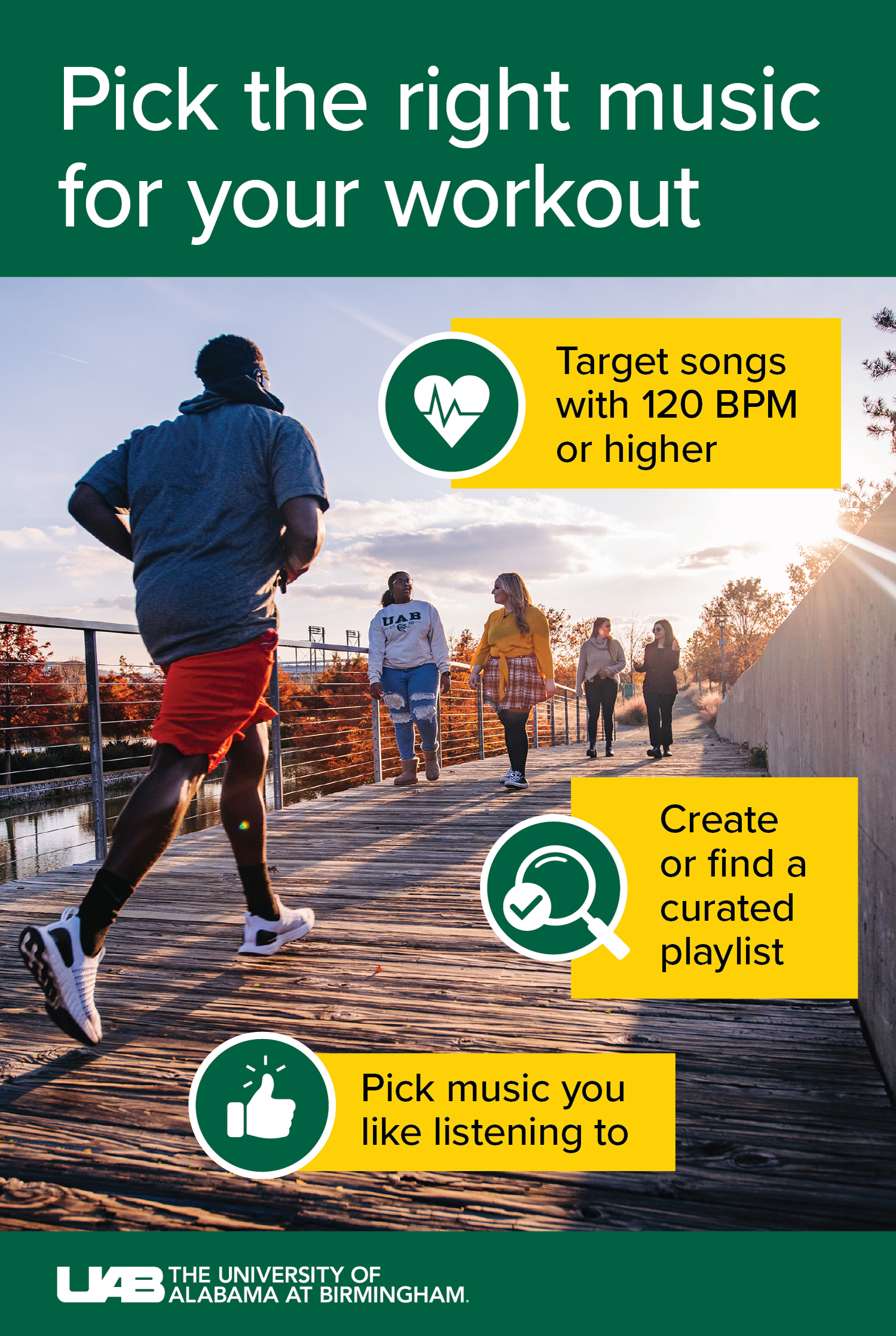 Have you ever been on a run and suddenly your favorite song started playing? Maybe it was by Drake or The Red Hot Chili Peppers. Maybe it was by Taylor Swift. Whatever the song may be, chances are it gave you an extra boost to finish that mile or run up that hill. Christopher Ballmann, Ph.D., an associate professor in the University of Alabama at Birmingham’s School of Education, has shown through his research why music can have a positive — or sometimes negative — impact on exercise routines or athletic performance.
Have you ever been on a run and suddenly your favorite song started playing? Maybe it was by Drake or The Red Hot Chili Peppers. Maybe it was by Taylor Swift. Whatever the song may be, chances are it gave you an extra boost to finish that mile or run up that hill. Christopher Ballmann, Ph.D., an associate professor in the University of Alabama at Birmingham’s School of Education, has shown through his research why music can have a positive — or sometimes negative — impact on exercise routines or athletic performance.
Ballmann, who has developed an entire line of research addressing the impact of music preference on exercise performance, aims to understand both the physiological and psychological effects at the crossroads of music and exercise.
“I see music as medicine and in combination with exercise results in profound health benefits,” Ballmann said. “It is well-documented that music alters physiological processes and can alter stress responses and motivation and can increase brain activation. My group has shown music can alter how hard muscle contracts, resists fatigue and increases effort. Many of our findings show that it changes performance and has immense applications to improvements in health.”
Harder, better, faster, stronger
Ballmann says the impact of changing tempo on exercise performance is a nuanced aspect that depends on the nature of the physical activity.
For exercises with a rhythmic component, such as running or weightlifting with repetitions, altering the tempo can be used to lead individuals to synchronize their movements with the beat.
This synchronization often enhances the overall experience and efficacy of the exercise routine.
However, Ballmann cautions that in certain scenarios, especially during maximal sprinting, varied tempos may not yield significant benefits.
“It could potentially hinder performance as the focus shifts from synchronization to achieving maximum speed,” he said.
Ballmann suggests a stimulative threshold at 120 beats per minute, a tempo considered conducive for optimal engagement in their studies.
More than words
Ballmann says ongoing studies are exploring the impact of lyrical content on exercise performance and perceptions. He is currently collaborating with the Alabama Brain Lab and the UAB Center for Engagement in Disability Health and Rehabilitation Sciences (CEDHARS) core to strategically use personalized music to manipulate physiological responses to exercise to improve exercise tolerance and adherence in clinical populations.
Sounds good to me
When it comes to genres of music and exercise, Ballmann says that it is dependent on the individual’s taste.
“Our research has shown that music must be personalized to be effective,” Ballmann said. “We have data showing that, if you listen to music you do not like, it can actually make your performance worse. To get the most out of your training, I recommend picking songs that you enjoy or distract you from discomfort during exercise. Some people even prefer podcasts as a source of distraction, which is something my lab is currently investigating.”
Whether it is a podcast or real head banger, Ballmann says that no music or song can be effectively applied to every type of exercise or single individual.
“The bottom line is that we have shown time and time again that choosing your own music and playlist is an easy and effective way to improve motivation and exercise performance,” Ballmann said.
Context matters
Tailoring a workout playlist might just be the key to unlocking one’s full exercise potential, according to Ballmann, emphasizing the significance of context in choosing the right tunes for physical activity.
“For intense sessions demanding maximal effort, a tailored selection that perfectly aligns with the difficulty level is crucial,” Ballmann said. “However, for more casual activity, like a jog around the block, a general playlist might suffice, offering a pleasant distraction and motivational boost.”
Ballmann suggests that such variety not only enhances the workout experience but also introduces the opportunity to discover new music, adding a harmonious touch to the fitness routine. Ultimately, whether someone is striving for peak performance or embracing a more laid-back approach to exercise, the context-driven playlist could be the playlist for success.